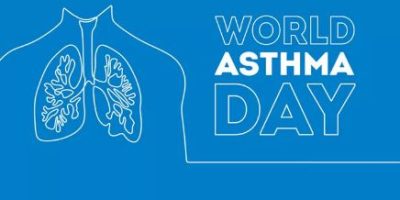Brisk walking may help men with prostate cancer
ISLAMABAD, 27 MAY (DNA) – A study of 1,455 U.S. men diagnosed with early-stage prostate cancer has found a link between brisk walking and lowered risk of prostate cancer progression, according to scientists at the University of California, San Francisco and the Harvard School of Public Health.
The scientists found that men who walked briskly — at least three miles per hour — for at least three hours per week after diagnosis were nearly 60 percent less likely to develop biochemical markers of cancer recurrence or need a second round of treatment for prostate cancer.
“The important point was the intensity of the activity — the walking had to be brisk for men to experience a benefit,” said Erin Richman, ScD, a postdoctoral fellow at UCSF who is the first author on the study, published in the journal Cancer Research. “Our results provide men with prostate cancer something they can do to improve their prognosis.”
An earlier study, published by UCSF’s June Chan, ScD, and collaborators at the Harvard School of Public Health, showed that physical activity after diagnosis could reduce disease-related mortality in a distinct population of men with prostate cancer. The new study complements this finding, as it was the first to focus on the effect of physical activity after diagnosis on early indications of disease progression, such as a rise in prostate-specific antigen (PSA) blood levels.
“Our work suggests that vigorous physical activity or brisk walking can have a benefit at the earlier stages of the disease,” said Chan, the Steven and Christine Burd-Safeway Distinguished Professor at UCSF and senior author of both studies.
After skin cancer, prostate cancer is the most commonly diagnosed type of cancer among men in the United States, and more than 217,000 U.S. men are diagnosed with the disease every year according to the National Cancer Institute. Last year alone 32,050 men died from the disease.
Vigorous exercise and brisk walking have been consistently shown to have significant benefits on cardiovascular health, diabetes, and many other diseases. Previous studies have also shown the benefit of regular physical activity for disease outcomes in breast and colon cancer, but this is one of the first studies to demonstrate such a benefit for men with prostate cancer.
The participants in this study were selected were a subset of a larger group of 14,000 men with prostate cancer who are enrolled in a long-term, nationwide prostate cancer registry study known as the Cancer of the Prostate Strategic Urologic Research Endeavor (CaPSURE™), led by Peter Carroll, MD, MPH, who is the chair of the Urology Department at UCSF and an author of the study
A particular strength of this study is the focus on early recurrence of prostate cancer, which occurs before men may experience painful symptoms of prostate cancer metastases, a frequent cause for men to decrease their usual physical activity. Additionally, the researchers reported that the benefit of physical activity was independent of the participants’ age at diagnosis, type of treatment and clinical features of their disease at diagnosis.
Asked whether she would recommend walking for all men who are diagnosed with prostate cancer, Dr. Chan said yes — but emphasized that the walking must be brisk.
“Our results suggest that it is important to engage in exercise that gets your heart rate up a little bit,” she advised.
The article, “Physical activity after diagnosis and risk of prostate cancer progression: data from the Cancer of the Prostate Strategic Urologic Research Endeavor” is authored by Erin L. Richman, Stacey A. Kenfield, Meir J. Stampfer, Alan Paciorek, Peter R. Carroll and June M. Chan. DNA
Related News

World Asthma Day observed to raise awareness
ISLAMABAD, MAY 06 (DNA) — World Asthma Day was observed on Tuesday to raise awareness aboutRead More

Al-Shifa Trust launches mobile eye surgery unit for remote communities
RAWALPINDI, APR 30 /DNA/ – In a decisive step toward reducing avoidable blindness in underservedRead More


Comments are Closed